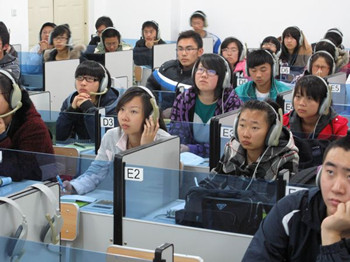Access matters
The exam does have its merits. Studies show that CET-4 results correlate directly with students' language proficiency, wrote Yang Huizhong, an English instructor at Shanghai Jiao Tong University, in the Foreign Language World journal. Yang also said that how well each school performs is statistically relevant to its national standing.
But subsequent pressure on teachers complicates the situation. At Qiqihar University, Zhang Lili, deputy dean of the non-English majors department, said students are placed into four classes that reflect their English results in gaokao.
The department assigns its most experienced teachers to the bottom class, and students can be promoted to a higher level if their end-of-term exam results are high enough. Zhang stressed that this is a regular practice among Chinese universities.
For the best students, teachers can have more freedom to teach them to master the language as a language. For the bottom students, the teachers' main task is to motivate the students to learn and at least prepare them for the test.
Stephen Hunter from Boston and John Dell from Virginia have taught English at the university for more than two years. For them, the challenge lies in ways to motivate students to study the language.
"As foreign teachers, why do we go to the class? Do we go there to entertain the students? Help the students? What they like? What should they like? I am going to teach them something," Dell said.
Compared with their counterparts in more affluent areas of China who have more access to English speakers, it is more difficult to motivate students in Qiqihar to learn English, Hunter said.
"Most Americans learn language through interaction," he said, giving an example. "If I want to learn French and I find you can speak French, I will come to bother you to teach me French and I can teach you English.
"But students in Qiqihar don't have such an environment. It can be frustrating to use Western approaches in a Chinese class where the students don't interact."
Hunter and Dell are granted the freedom to design their own final exams for their students - about 350 each - as well as to choose and edit their own textbooks. But their students still have to take CET-4.


















